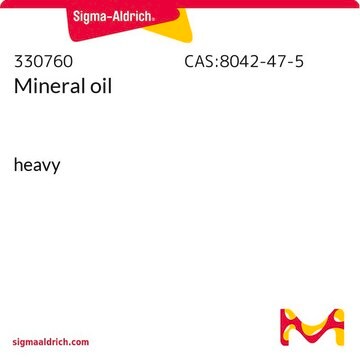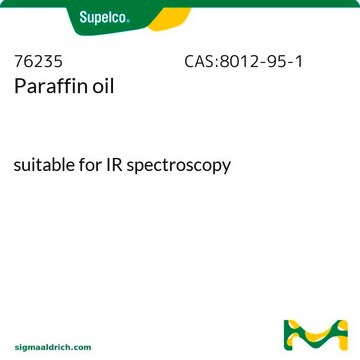well very good for your product, I hope your product with cheaper than in near future
128503
Heptadecane
99%
Synonym(s):
n-Heptadecane
Select a Size
Select a Size
About This Item
Recommended Products
vapor density
8.3 (vs air)
Quality Level
vapor pressure
1 mmHg ( 115 °C)
Assay
99%
refractive index
n20/D 1.436 (lit.)
bp
302 °C (lit.)
mp
20-22 °C (lit.)
density
0.777 g/mL at 25 °C (lit.)
SMILES string
CCCCCCCCCCCCCCCCC
InChI
1S/C17H36/c1-3-5-7-9-11-13-15-17-16-14-12-10-8-6-4-2/h3-17H2,1-2H3
InChI key
NDJKXXJCMXVBJW-UHFFFAOYSA-N
Looking for similar products? Visit Product Comparison Guide
Signal Word
Danger
Hazard Statements
Precautionary Statements
Hazard Classifications
Asp. Tox. 1
Storage Class Code
10 - Combustible liquids
WGK
WGK 1
Flash Point(F)
300.2 °F - closed cup
Flash Point(C)
149 °C - closed cup
Personal Protective Equipment
Regulatory Listings
Regulatory Listings are mainly provided for chemical products. Only limited information can be provided here for non-chemical products. No entry means none of the components are listed. It is the user’s obligation to ensure the safe and legal use of the product.
FSL
Group 4: Flammable liquids
Type 3 petroleums
Hazardous rank III
Water insoluble liquid
JAN Code
128503-BULK:
128503-25ML:
128503-100ML:
128503-VAR:
128503-100G:
128503-25G:
128503-2G:
Choose from one of the most recent versions:
Certificates of Analysis (COA)
Don't see the Right Version?
If you require a particular version, you can look up a specific certificate by the Lot or Batch number.
Already Own This Product?
Find documentation for the products that you have recently purchased in the Document Library.
Customers Also Viewed
Active Filters
Our team of scientists has experience in all areas of research including Life Science, Material Science, Chemical Synthesis, Chromatography, Analytical and many others.
Contact Technical Service










